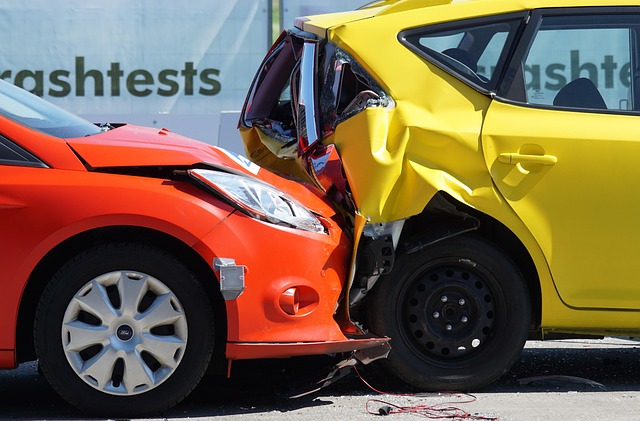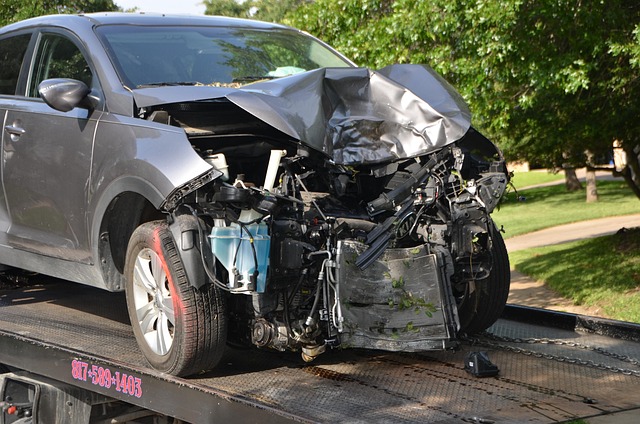Collision vs. comprehensive auto insurance protect vehicle owners in different ways. Collision covers damage from accidents, while comprehensive offers broader protection against non-collision events like theft, vandalism, and natural disasters. Comprehensive policies typically have higher deductibles but provide peace of mind for less common but severe incidents. When deciding, consider your risk profile, location, vehicle value, and preferred level of financial protection.
Collision and comprehensive auto insurance are two essential coverage options that protect your vehicle, but they offer distinct benefits. This article explores the nuances between these policies, guiding you through collision insurance’s focus on accident-related damages and its reimbursement processes. We delve into comprehensive insurance’s broader scope, covering non-collision events. Key differences in accidental vs. intentional damage are highlighted, along with an analysis of policy deductibles’ role. By understanding these distinctions, you can make informed choices between collision and comprehensive auto insurance, tailored to your needs.
Understanding Collision Insurance: Coverage and Reimbursement

Collision insurance is designed to protect against financial loss in the event of a car accident. When you have collision coverage, your policy will help pay for repairs or replace your vehicle if it’s damaged in a crash. This includes both your car and any other vehicles or property involved in the accident. The reimbursement process typically involves filing a claim with your insurance provider, who will assess the damage and either approve or deny the claim based on the terms of your policy.
In contrast, comprehensive auto insurance offers broader protection against non-collision related incidents such as theft, vandalism, natural disasters, and animal strikes. It goes beyond repairing physical damage by also covering the cost of replacing or repairing your vehicle if it’s stolen or totaled. While collision coverage focuses on the financial impact of a crash, comprehensive insurance provides a safety net for a wider range of unexpected events, giving peace of mind knowing you’re protected no matter the cause.
Comprehensive Insurance: What It Covers Beyond Collisions

Comprehensive insurance goes beyond covering collisions, offering protection for a wide range of unforeseen events. This type of policy is designed to safeguard against various risks that could impact your vehicle, providing peace of mind on the road. In addition to protecting you from accidents, comprehensive coverage includes damage caused by natural disasters like floods, storms, or falling objects. It also extends to theft and vandalism, ensuring that if your car is stolen or damaged by criminals, you’re financially secured.
Unlike collision insurance which primarily focuses on accidents involving another vehicle or fixed object, comprehensive insurance takes a broader approach. It can cover incidents such as animal strikes, mechanical failures, and even personal belongings being damaged while in the vehicle. This makes it a valuable option for drivers who want to be prepared for unexpected situations that may arise during their daily commutes or travels.
Key Differences: Accidental vs. Intentional Damage

When discussing collision and comprehensive auto insurance, a key distinction lies in the nature of the damage covered. Collision vs. Comprehensive policies address different scenarios and types of damage, offering insights into what each is designed to protect against. Collision coverage primarily kicks in when your vehicle suffers accidental damage, such as being hit by another car or encountering road debris. It typically repairs or replaces damaged parts, but only if the incident involves a collision—hence the name.
In contrast, comprehensive insurance provides protection for a broader range of incidents beyond collisions. This includes damages from theft, natural disasters like floods or storms, vandalism, and even animal-related accidents. Comprehensive coverage is designed to safeguard your vehicle against unforeseen circumstances, offering peace of mind in the face of unexpected events that could leave your car damaged or totaled. Understanding these collision vs. comprehensive differences is crucial when tailoring your auto insurance policy to your needs.
The Role of Policy Deductibles in Collision and Comprehensive Claims

When it comes to collision versus comprehensive auto insurance, understanding policy deductibles is key. Deductibles represent the out-of-pocket expense you agree to pay when filing an insurance claim. In the event of a collision, this amount is typically lower as policies are designed to cover damages resulting from accidents. For example, a collision deductible might range from $500 to $1000, encouraging prompt claim resolution and repair.
In contrast, comprehensive coverage offers protection for a wider range of incidents beyond collisions, including theft, vandalism, and natural disasters. Consequently, comprehensive deductibles tend to be higher, often ranging from $1000 to $2000 or more. While this may seem like a significant upfront cost, it provides peace of mind knowing that less common but equally devastating events are covered without a substantial outlay from the policyholder.
Common Scenarios: When to Choose Each Type of Coverage

In terms of collision versus comprehensive auto insurance, understanding when to choose each type is key in navigating the complexities of vehicle protection. Collision coverage is designed to protect against damages incurred during a collision with another vehicle or stationary object. This makes it a wise choice if you frequently drive in areas with high traffic density, or if your car is particularly valuable and at risk of being damaged in accidents.
On the other hand, comprehensive insurance covers a wide range of incidents beyond collisions, including theft, vandalism, natural disasters, and animal-related damages. It’s recommended for vehicle owners who operate their cars in environments with higher risks of these unforeseen events. Comprehensive coverage can be especially beneficial if you live in areas prone to extreme weather conditions or have a history of car break-ins.
Comparing Costs: Evaluating the Financial Impact of Each Option

When comparing collision vs. comprehensive auto insurance, one of the most significant factors to consider is the financial impact of each option. Collision coverage is designed to protect against damages incurred in a crash with another vehicle or object. This includes repairs or replacement costs for your car, minus your deductible. It’s important to note that while collision insurance can be beneficial for those who frequently drive and are at higher risk of accidents, it may not always be the most cost-effective choice. The premiums for collision coverage can vary widely depending on factors like your vehicle’s make and model, driving history, and location.
Comprehensive auto insurance, on the other hand, provides broader protection against non-collision events such as theft, vandalism, natural disasters, and animal-related incidents. This type of coverage will typically cover the full cost of repairs or replacement, up to the vehicle’s actual cash value, minus the deductible. While comprehensive policies generally come at a higher premium than collision, they offer peace of mind by ensuring you’re protected against a wider range of unexpected events. Evaluating your risk profile and the specific needs of your situation can help determine which option offers the best financial protection in the long run.
